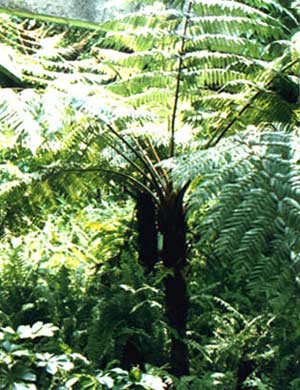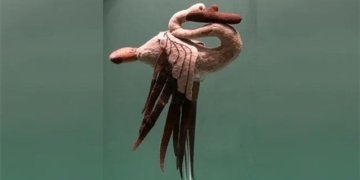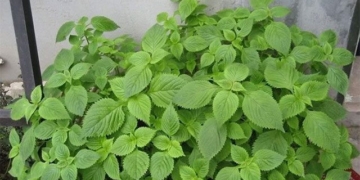The Toa La, also known as the Thụ Quyết or Horse Chestnut tree, is an extremely rare hardwood tree species. This plant is an ancient species; today, most of its relatives are herbaceous.
 |
(Image: kepu.com.cn) |
Approximately 200 million years ago, during the age of dinosaurs, the Toa La was widespread globally, tall and dense. Due to geological changes, the vast majority of Toa La species have gone extinct, buried underground and transformed into coal, with only a few remaining.
The Toa La grows in tropical rainforests, reaching heights of 3-8 meters, and in the forests on some islands in the South Pacific, it can grow up to 20 meters, making it the tallest of its kind in the world. The trunk of the Toa La is round, somewhat resembling a coconut tree, with no branching and featuring sparse thorns or hexagonal scars. At the top, there is a large, feathery compound leaf that radiates outwards.
The Toa La does not produce flowers, fruits, or seeds. The underside of its leaves is covered with numerous sporangia, appearing as yellow dots, which contain a large number of spores. The Toa La reproduces through these spores.
The mature spores are dispersed by the wind, falling to the ground and germinating into a heart-shaped green leaf (gametophyte) capable of photosynthesis. The underside develops false roots, allowing it to live independently. The front section of the gametophyte produces an egg sac, while the back grows a sperm bag, together referred to as the zygote. When the sperm matures, it swims towards the egg sac, aided by its tail, navigating through water to fuse with the egg cell, forming a zygote. The zygote absorbs nutrients from the gametophyte, gradually developing into an embryo and eventually growing into a Toa La tree.
The trunk of the Toa La contains a significant amount of starch, making it edible and also suitable for crafting items. In traditional Chinese medicine, it is known as “long cốt phong,” which is believed to help alleviate rheumatism, strengthen bones, and reduce coughing.




















































